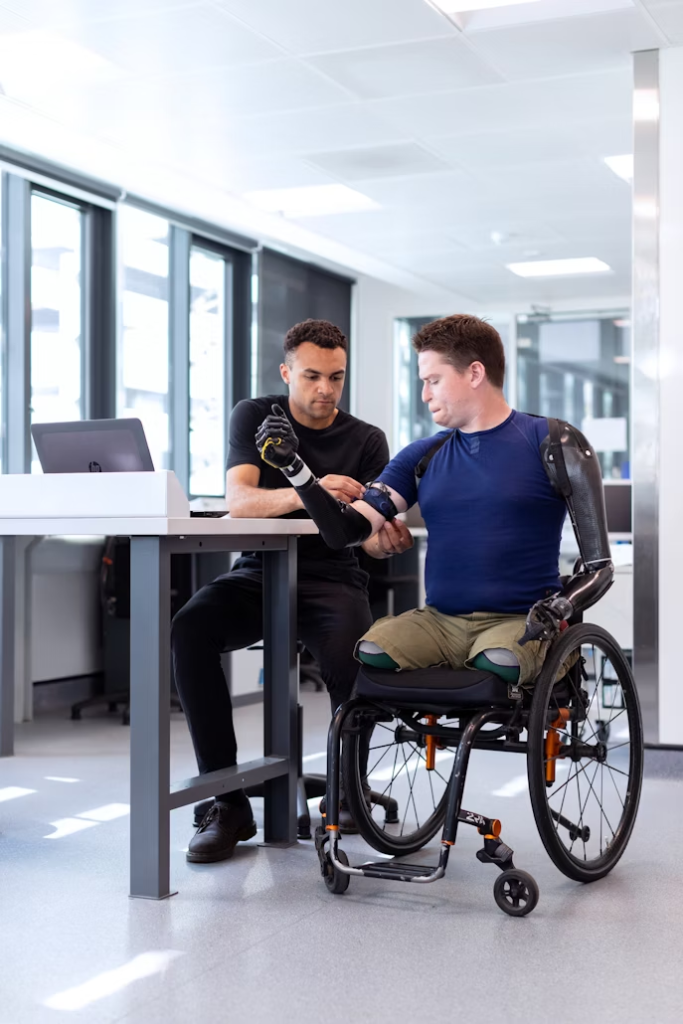Recovering from long-term pain requires more than simply waiting for the body to heal. Rehabilitation Reinvented: From Chronic Pain to Confident Movement brings a structured, goal-oriented approach to recovery that helps people regain not only physical function but also the confidence to move freely again.

For those seeking tailored rehabilitation programs with proven results, services like physium can make the process more efficient and sustainable.
Understanding Chronic Pain and Its Impact
What Chronic Pain Does to the Body
Chronic pain often leads to reduced activity levels, muscle weakness, and joint stiffness. Over time, this can create a cycle of discomfort and decreased mobility. Left unaddressed, it may affect posture, coordination, and even cardiovascular health.
The Mental Health Connection
Persistent pain can influence mood, sleep patterns, and motivation. Anxiety or depression may develop, making it even harder to stick to rehabilitation routines.
Rehabilitation Reinvented: From Chronic Pain to Confident Movement as a New Approach
Moving Beyond Symptom Management
Rehabilitation Reinvented: From Chronic Pain to Confident Movement focuses on long-term solutions rather than short-term symptom relief. The aim is to:
- Address the root cause of pain.
- Improve mobility and functional strength.
- Restore quality of life.
The Holistic View of Recovery
This method integrates physical therapy, lifestyle adjustments, and education. The goal is to teach participants how to manage their condition and prevent flare-ups.
The Role of Physiotherapy in Reinvented Rehabilitation
Targeted Exercise Programs
Physiotherapists create exercises that focus on:
- Strengthening weakened muscle groups.
- Improving joint range of motion.
- Enhancing balance and coordination.
Manual Therapy Techniques
Hands-on methods, such as mobilisation and soft tissue therapy, can:
- Reduce pain.
- Improve blood flow.
- Support healing of affected tissues.
Functional Movement Training
Restoring Everyday Function
Rehabilitation Reinvented: From Chronic Pain to Confident Movement promotes movements that mimic daily activities:
- Lifting and bending without strain.
- Walking with improved posture.
- Climbing stairs safely.
Building Movement Confidence
Patients gradually relearn how to move without fear of triggering pain. This builds trust in their bodies again.
Nutrition and Lifestyle in Pain Management
Fuel for Recovery
A balanced diet supports tissue repair and reduces inflammation. Recommended inclusions are:
- Lean proteins for muscle regeneration.
- Fruits and vegetables for antioxidants.
- Omega-3-rich foods to help reduce inflammation.
The Importance of Sleep
Restorative sleep allows the body to heal and lowers pain sensitivity.
Rehabilitation Reinvented: From Chronic Pain to Confident Movement Through Technology
Telehealth and Virtual Programs
Remote sessions can guide participants through their exercises at home. Benefits include:
- Convenience for those with mobility limitations.
- Access to specialists regardless of location.
- Reduced travel time and costs.
Wearable Devices for Progress Tracking
These can monitor:
- Step count and daily activity levels.
- Heart rate during exercises.
- Sleep quality and recovery patterns.
Psychological Support in Recovery
Addressing the Fear of Movement
Some people avoid activity because they associate it with pain. Education and gradual exposure help rebuild confidence.
Stress Reduction Techniques
Methods like breathing exercises, guided relaxation, and mindfulness can reduce muscle tension and pain perception.
Preventing Recurrence
Maintenance Programs
After initial rehabilitation, ongoing exercise and self-care routines prevent regression. This may involve:
- Weekly group classes.
- Home exercise plans.
- Periodic check-ins with a therapist.
Workplace and Home Modifications
Adjusting workstations, using supportive chairs, and creating safe walking areas reduce strain and risk of injury.
The Importance of Individualised Care
Tailored Programs for Different Conditions
Rehabilitation plans should reflect the type of pain and the person’s goals. For example:
- Osteoarthritis patients may focus on joint stability.
- Post-surgical patients may need gradual strength rebuilding.
- Sports injury recovery may emphasise agility and speed.
Monitoring and Adapting the Plan
Regular progress reviews ensure the program remains effective as the patient’s condition changes.
Case Examples of Rehabilitation Reinvented
Case 1: Lower Back Pain Recovery
David had experienced chronic lower back pain for five years. Through targeted core strengthening, manual therapy, and gradual load-bearing activities, he returned to gardening and light sports.
Case 2: Shoulder Injury Rehabilitation
Sofia’s shoulder pain limited her work as a hairdresser. A combination of mobility drills, postural correction, and resistance training restored her range of motion and endurance.
Rehabilitation Reinvented: From Chronic Pain to Confident Movement in Older Adults
Age-Specific Considerations
Older adults may require:
- Lower impact exercises.
- Balance-focused activities.
- Support in preventing falls.
Encouraging Independence
By improving mobility and strength, older patients maintain independence for longer.
The Link Between Movement and Pain Reduction
How Movement Supports Healing
Regular, guided movement:
- Improves circulation.
- Reduces inflammation.
- Stimulates endorphin release for natural pain relief.
Avoiding the Sedentary Trap
Inactivity can worsen stiffness and reduce joint lubrication, leading to more discomfort over time.
Practical Tips for Successful Rehabilitation
1. Set Realistic Goals
Break larger objectives into smaller milestones to maintain motivation.
2. Keep a Recovery Journal
Record exercises completed, pain levels, and progress.
3. Involve Your Support Network
Friends, family, or carers can encourage consistency and provide practical help.
Overcoming Common Barriers
Time Constraints
Short, focused exercise sessions can be just as effective as longer ones when done consistently.
Flare-Ups During Recovery
Temporary setbacks are normal. The focus should be on adjusting intensity, not stopping altogether.
Low Motivation
Scheduling regular check-ins with a therapist or joining a group program can help maintain commitment.
Rehabilitation Reinvented in Community Settings
Group Rehabilitation Classes
These sessions provide:
- Social interaction.
- Mutual encouragement.
- Supervised exercise in a supportive environment.
Partnerships with Local Organisations
Collaboration with sports clubs, senior centres, and workplaces increases access to ongoing programs.
Conclusion
Rehabilitation Reinvented: From Chronic Pain to Confident Movement is about shifting from a passive approach to a proactive, multi-faceted recovery plan.
By combining physiotherapy, functional movement training, lifestyle changes, and psychological support, people can break the cycle of pain and rediscover the freedom to move confidently.
The key is consistency, guidance from qualified professionals, and a commitment to long-term health rather than short-term fixes.
Frequently Asked Questions
How long does it take to move from chronic pain to confident movement?
Timeframes vary, but most patients notice improvements within weeks, with more substantial results over several months.
Can I start rehabilitation if I still have pain?
Yes. Many programs are designed to work alongside pain management strategies and can actually help reduce discomfort over time.
Is technology-based rehabilitation as effective as in-person sessions?
For many people, virtual sessions and wearable monitoring tools offer effective guidance and accountability, especially when combined with periodic in-person assessments.
